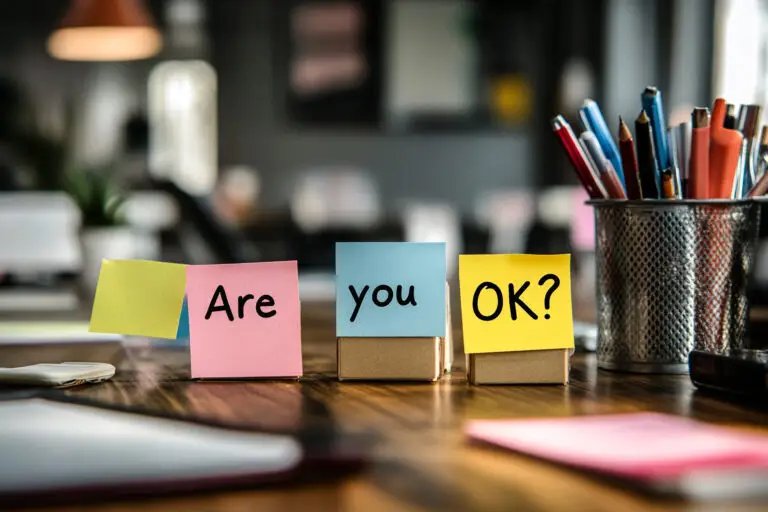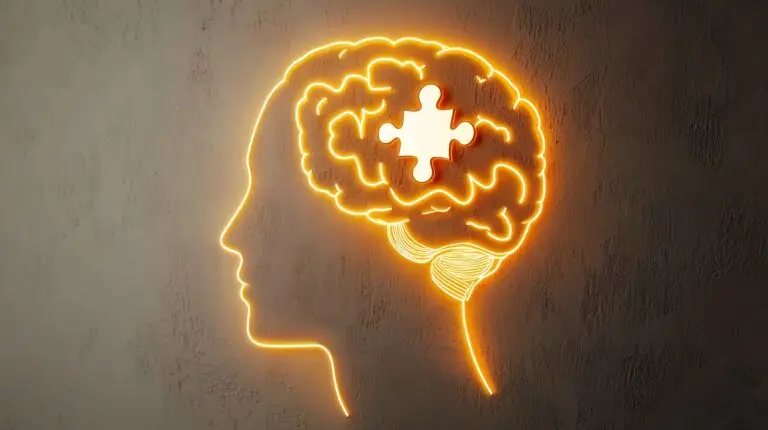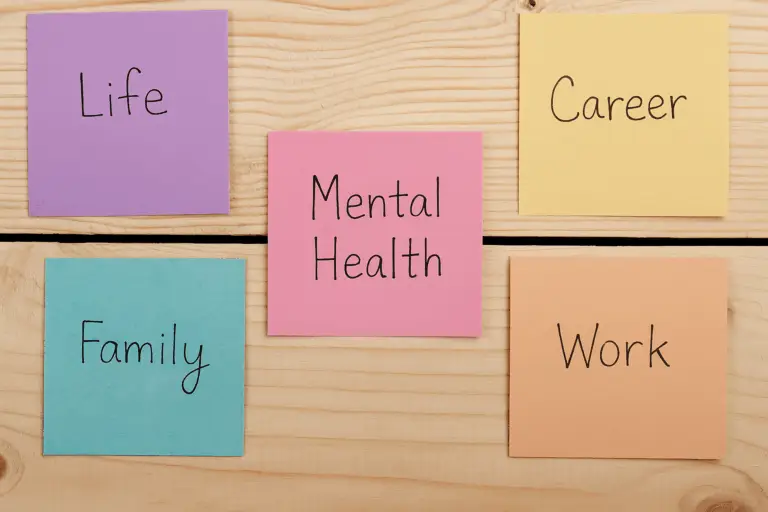
Why Mental Health Deserves Serious Attention
Mental health impacts every aspect of daily life, yet remains quietly hidden behind silence, stigma, and misunderstanding. Beyond visible emotional struggles, untreated mental health conditions disrupt sleep, decision-making, and even shorten lifespans. Recognizing why mental health is important encourages meaningful conversations, fosters compassion, and guides individuals toward crucial resources and support networks.
Turning Up the Volume on Mental Health
Mental Health Awareness Month shines a necessary spotlight on struggles that frequently remain hidden behind closed doors. It goes beyond simply spreading awareness by prompting deeper conversations about invisible emotional injuries people carry privately. Often, the mental wounds individuals bear don’t show visible scars or provoke obvious empathy, causing isolation and misunderstanding. This initiative uniquely emphasizes the silent battles faced by caretakers and loved ones, whose support efforts often go unnoticed. It invites communities to recognize emotional fatigue and burnout among caregivers as equally deserving of support. Acknowledging these overlooked dynamics, Mental Health Awareness Month inspires inclusive compassion and genuine, meaningful solidarity.
The History and Mission Behind Mental Health Awareness Month
May is Mental Health Awareness Month, which originated in 1949, tracing back to a period when emotional distress remained misunderstood and stigmatized. Initially, its mission quietly challenged societal attitudes that trivialized psychological suffering, addressing emotional health long before mainstream acceptance. Today, its continued purpose is to confront overlooked emotional vulnerabilities and foster authentic community dialogues.
Awareness Leads to Understanding and Support
Awareness transforms vague sympathies into genuine empathy by revealing the nuanced realities behind mental illness. Often overlooked is how authentic awareness exposes subtle indicators of distress that go unnoticed, enabling intervention before struggles intensify. It fosters understanding by highlighting that mental illness isn’t simply personal—it affects entire family systems, influencing communication, stability, and emotional bonds. This broader perspective dismantles harmful myths, such as the misconception that mental distress signifies personal weakness or lack of willpower. Instead, awareness cultivates supportive conversations that validate rather than isolate, ensuring emotional struggles are recognized as legitimate health concerns. Ultimately, it empowers individuals and their families with confidence to seek help openly.
Awareness Leads to Understanding and Support

Taking Mental Health Seriously: What the Science Shows
Mental health has measurable, lasting effects on the body. According to the National Institute of Mental Health, nearly 1 in 5 U.S. adults lives with a mental illness. These conditions increase the risk of chronic diseases like heart failure, diabetes, and respiratory issues. In fact, individuals with serious mental illness die 10 to 25 years earlier than average, often due to untreated physical complications. When emotional well-being is left unaddressed, it quietly reshapes a person’s health, relationships, and long-term outcomes—often without warning.
Mental Illness Is More Common Than Many Realize
Mental illness often goes unrecognized, yet it affects a significant portion of the population. In 2022, approximately 23.1% of U.S. adults—about 59.3 million people—experienced some form of mental illness. Young adults aged 18–25 reported the highest prevalence at 36.2%, while adults aged 50 and older had a prevalence of 13.9%. Women were more affected than men, with 26.4% of women and 19.7% of men reporting mental illness. National Institute of Mental Health
These statistics underscore that mental health challenges are widespread and not confined to any single demographic. Understanding the prevalence of mental illness is crucial for fostering empathy and encouraging individuals to seek support.
Can Mental Health Cause Physical Pain? The Mind-Body Connection
Mental health significantly impacts physical well-being through hidden biological pathways that quietly amplify pain signals and bodily distress. Emotional tension subtly disrupts hormone balance, muscle function, and immune response, particularly in older adults whose symptoms are often dismissed as normal aging. Understanding this delicate interplay encourages holistic treatment, addressing emotional pain alongside physical discomfort for lasting relief.
Research indicates that chronic pain affects up to 65% of the U.S. population, often leading to reduced occupational activity and subsequent economic loss. Psychiatry Online Additionally, studies have shown that 35% to 45% of people with chronic pain also experience depression, highlighting the close relationship between chronic pain and mood disorders. Masters Events
These findings underscore the importance of recognizing and treating mental health conditions not only for emotional well-being but also for physical health. By acknowledging the mind-body connection, individuals and healthcare providers can work together to develop comprehensive treatment plans that address both mental and physical aspects of health.
Mental Distress That Hurts the Body
Emotional distress often manifests physically, leading to chronic pain that is both real and debilitating. In 2021, approximately 20.9% of U.S. adults—about 51.6 million people—experienced chronic pain . Among these individuals, nearly half (49.1%) also suffered from depression,.CDC
This interplay between emotional and physical health underscores the importance of addressing mental distress not just as a psychological issue but as a significant contributor to physical ailments. Recognizing and treating the emotional roots of chronic pain can lead to more effective and comprehensive care strategies.
Understanding Psychosomatic Symptoms
Psychosomatic symptoms are genuine physical manifestations triggered by emotional distress, often misunderstood or mistakenly dismissed as imagined. These symptoms quietly alter bodily functions—such as digestion, heart rhythm, or skin sensitivity—due to subtle disruptions in brain-body communication. Recognizing psychosomatic signs as real physiological responses helps individuals receive effective care, validating their experiences without shame.
Can Mental Health Be Cured? The Truth About Healing and Management
Mental health recovery rarely follows a straight path. While some conditions improve significantly, many require lifelong care, not because people fail—but because the brain, like the heart or lungs, needs ongoing attention. Healing often involves building resilience, redefining identity, and adjusting expectations. It’s a process of management, not perfection, shaped by support, self-awareness, and time.
What Recovery Really Looks Like
Recovery doesn’t always mean symptoms disappear—it often means learning how to live well alongside them. Progress might show up as setting boundaries, asking for help, or recognizing emotional triggers before they spiral. Some days will still be hard. But recovery is shaped by small wins, personal insight, and moments of clarity that quietly rebuild confidence and connection, one step at a time.
Treatment Options and Their Impact
Effective mental health treatment isn’t one-size-fits-all. It often involves a combination of approaches tailored to individual needs. Here are some evidence-based treatment options:
- Psychotherapy: Also known as talk therapy, it helps individuals identify and change troubling emotions, thoughts, and behaviors. Common types include cognitive behavioral therapy (CBT), dialectical behavior therapy (DBT), and interpersonal therapy.
Source: National Institute of Mental Health (NIMH) - Medications: These can include antidepressants, anti-anxiety medications, mood stabilizers, and antipsychotics. They are often used in combination with psychotherapy.
Source: NIMH – Mental Health Medications - Brain Stimulation Therapies: For treatment-resistant conditions, options like electroconvulsive therapy (ECT), repetitive transcranial magnetic stimulation (rTMS), and vagus nerve stimulation may be considered.
Source: NIMH – Brain Stimulation Therapies - Lifestyle Modifications: Regular exercise, a balanced diet, adequate sleep, and stress management techniques can significantly impact mental well-being.
Source: NIMH – Caring for Your Mental Health - Support Groups and Peer Support: Connecting with others facing similar challenges can provide emotional support and practical advice.
Source: NIMH – Find Help
- Psychotherapy: Also known as talk therapy, it helps individuals identify and change troubling emotions, thoughts, and behaviors. Common types include cognitive behavioral therapy (CBT), dialectical behavior therapy (DBT), and interpersonal therapy.
It’s essential to consult with a healthcare provider to determine the most appropriate treatment plan.

Why Mental Health Is Important for Everyone—Not Just Those Diagnosed
Mental health shapes how people relate, parent, work, and cope—even if they’ve never received a diagnosis. Emotional stability affects how conflict is managed, how empathy is shown, and how routines are maintained. When ignored, even mild emotional struggles ripple outward, quietly influencing homes, friendships, and communities. Supporting mental health isn’t just personal—it’s a collective responsibility.
The Ripple Effects on Families and Friends
Mental illness doesn’t happen in isolation—it quietly reshapes family dynamics, roles, and emotional safety. Loved ones may carry invisible burdens, becoming caregivers, mediators, or silent supporters. Children often internalize tension they can’t name, while partners absorb stress without acknowledgment. These ripple effects can strain even strong relationships, underscoring the need for support that reaches beyond the individual and into the home.
Creating Supportive Spaces in Everyday Life
Support doesn’t always require grand gestures. It lives in daily actions—listening without fixing, offering quiet company, respecting boundaries. Workplaces that normalize mental health days and homes that welcome honest conversations create lasting safety. Even small acts, like adjusting expectations or checking in consistently, can shift emotional climates. Supportive spaces are built slowly, through presence, patience, and a willingness to understand.
Where to Turn and What to Expect
Support for mental illness doesn’t have to start with a diagnosis. It can begin with noticing someone is struggling, even quietly. For older adults, especially those facing grief or preparing for the end of life, mental health support can be just as essential as physical care.
Some will need therapy. Others may benefit from gentle conversation, group connection, or grief-specific resources. For those navigating loss, bereavement counseling offers a space to process grief in a compassionate and personal way. Mental health care includes support for those left behind—and those preparing to go.
Reliable Resources for Mental Health Education and Care
Reliable information can be a lifeline, especially when emotions cloud judgment. Trusted sources like the Mayo Clinic and SNHU offer clear, stigma-free guidance. These platforms help individuals understand symptoms, explore treatments, and find local support. Access to evidence-based education empowers people to make informed choices, bridging the gap between uncertainty and the care they deserve.
What Real Support Looks Like in Action
Real support isn’t loud or forceful—it’s consistent, patient, and often invisible. It looks like checking in without needing answers, respecting silence without retreating, and holding space during setbacks. Support means staying when conversations get uncomfortable and showing up again tomorrow. It’s less about fixing and more about being present, especially when hope feels out of reach.

Take the First Step—It Matters More Than You Know
The hardest part is often the beginning—a quiet moment of honesty, a single conversation, a choice to reach out. Mental health isn’t just about crisis; it’s about daily courage, quiet healing, and steady support. Whether you’re struggling or standing beside someone who is, the first step matters. Small actions can become lifelines.
“Just because no one else can heal or do your inner work for you doesn’t mean you can, should, or need to do it alone.”
— Lisa Olivera

